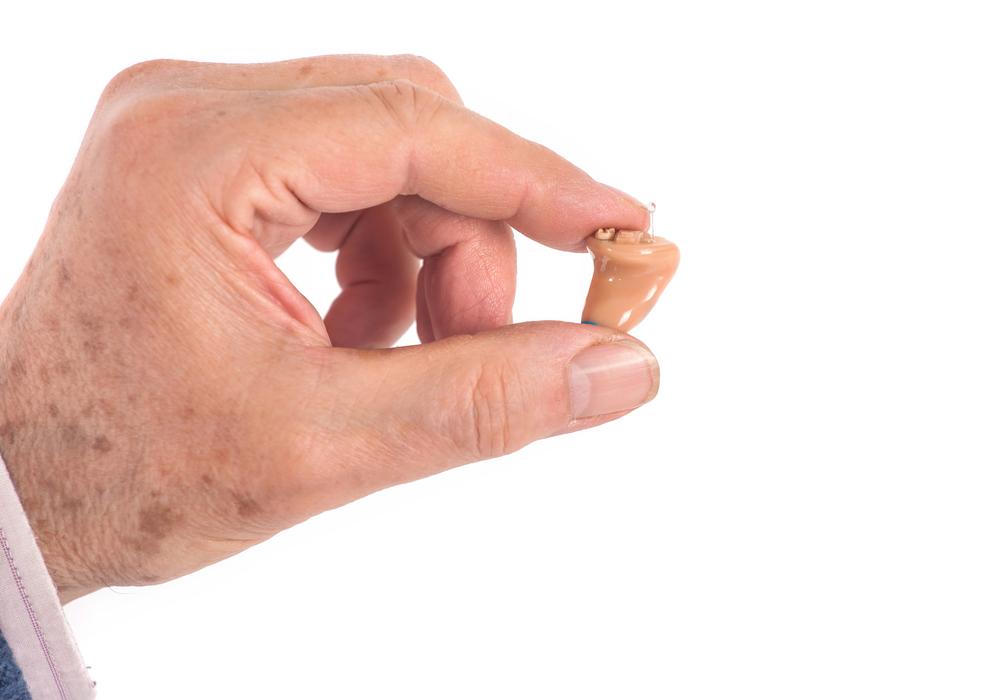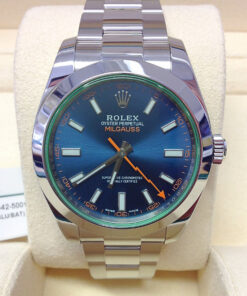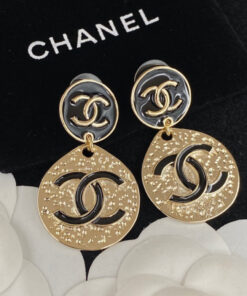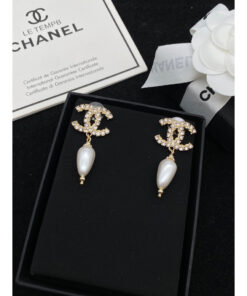Whether you’re new to wearing hearing aids or you’ve been prescribed glasses for the first time, you might be wondering whether wearing a hearing aid with glasses is possible. The short answer is yes — there are many different types of hearing aids that are comfortable to wear alongside spectacles.
Thousands of people successfully wear hearing aids with glasses and, with the right advice, you can too. We’ve put together this guide to help you choose a hearing aid that suits your type of hearing loss and is comfortable to wear alongside glasses. You’ll also find tips on how to wear both your hearing aid and glasses for maximum comfort!
Behind-the-Ear Hearing Aids
A behind-the-ear aid, or BTE hearing aid, is a small plastic device that sits behind (or on top) of the outer ear. The device is attached with a tube to an “earmold” that fits in your ear or a “soft tip”, which sits in the opening of the ear.
Behind-the-ear hearing devices are usually the type of hearing aids that people worry most about wearing with glasses. But despite BTEs sitting behind your ear, where the arms of your glasses sit, it is possible to comfortably wear this type of hearing aid as well as your spectacles.
The Benefits of BTE Hearing Aids
Before looking at how to wear BTE hearing aids with glasses, you should consider whether this is the right type of hearing aid for you. Traditional BTE hearing aids with earmolds aren’t as common as they used to be, but they are still one of the most popular choices for people with moderate to severe hearing loss.
- BTE Devices Are Powerful — BTE hearing aids are more powerful than many alternatives, including receiver-in-the-canal (RITC) and in-the-ear (ITE) devices, making them a good choice for people with moderate to severe hearing loss. Because the BTE sits outside the ear, it can accommodate a larger battery, allowing for greater processing power and better amplification.
- Discreet Appearance — While there is an increasing number of advanced hearing aids that offer a discreet or even “invisible” appearance, BTE hearing aids also offer this benefit. They sit neatly behind or on top of the outer ear and cannot be seen at all when viewed from one side. The “mini BTE” hearing aid is practically invisible when worn.
- Choice — BTE hearing aids are the most versatile device available because there are versions to suit all levels of hearing loss, from mild to severe. These devices are also popular with children because they come in a range of different colours — they can match skin tones and are also available in bright and fun colours.
- Suitable for Discharging Ears — The earmold used in BTE devices is made entirely of plastic; it doesn’t contain any electronic components. This makes it a good choice of hearing aid for those with wet or discharging ears.
- Comfortable — A hearing aid is a very personal choice; what feels comfortable and helpful to one person may be irritating and cumbersome to another. Many people find it more convenient to use a device that sits outside the ear rather than inside it. Some people are physically unable to use in-ear devices because their ear canals are too small, making a BTE the perfect (and only) choice.
- User-Friendly — The BTE’s popularity is due, at least in part, to its ease of use. The controls vary between device types. But they are all easy to access and use — either directly or via remote controls and mobile phone apps.
- Easily Maintained — BTEs are less susceptible to damage from dirt, dust, moisture and other external contaminants. The “ingress protection” (IP) rating of a device demonstrates its resistance to these factors. Because of the positioning outside the ear and that most BTEs are larger than other types of hearing aid, these devices are also easier to clean.
Wearing a BTE Hearing Aid with Glasses

If a BTE device sounds like the hearing aid for you, you’ll be pleased to hear that it’s perfectly possible to wear one comfortably with glasses. You’ll just need to take a little care when putting on your hearing device and spectacles. Here are our tips for success:
- Speak to your optician about the best style of glasses to wear with your hearing aid. Frames with thin wire earpieces will allow more room behind the ear for your BTE.
- Practice removing your glasses in a way that will not displace the hearing aid. Generally, using both hands and taking your glasses off in a forward motion will leave your BTE undisturbed. It may be helpful to practice in front of a mirror.
- Put your glasses on before fitting your hearing aid. Glasses cannot easily be repositioned as they have a fixed form and will always sit on your ear in the same place. A BTE device can sit comfortably around the arms of the glasses.
- Speak to your audiologist about the most suitable size of BTE hearing aid for you. Even the largest device can be used comfortably with glasses after a bit of practice, but you may choose to opt for a smaller hearing aid, such as the mini BTE.
Receiver-in-the-Canal Hearing Aids
Receiver-in-canal (RIC), also known as receiver-in-the-ear (RITE) devices are the most popular types of hearing aids in the UK. These devices have electronic working parts in the earmold and a tiny case that sits behind the ear. This case contains a tiny microphone and processor, and while it may seem similar to a BTE device, it is actually much smaller.
The Benefits of RIC and RITE Hearing Aids
RIC hearing aids are the most popular devices in the UK because they’re comfortable and suitable for most people, whether you have mild or severe hearing loss. Here are some of the benefits of these hearing devices.
- Subtle Appearance — Receiver-in-the-ear devices are designed to be subtle, with a transparent wire leading from the behind-the-ear case to the in-ear receiver. With this hearing aid, you can also choose a colour that matches your skin tone.
- Less Feedback — In RIC devices, the microphone and the receiver are positioned further away from each other than in BTEs. This means there’s less chance of the device producing feedback (whistling sounds).
- Varying Power Levels — RIC hearing aids can be made with different power levels depending on your level of hearing loss. Some will also offer manual volume control, giving you the ability to turn your hearing aid up or down in different situations. This makes these hearing aids suitable for all levels of hearing impairment.
- Comfortable — With a smaller behind-the-ear case, RIC hearing aids are more comfortable to wear than BTEs. Many people also find them more comfortable than ITE and CIC hearing aids (read on to find out more about these devices) because they don’t “block up” your ear — the speaker rests inside the ear but doesn’t block it completely.
Wearing RIC Hearing Aids with Glasses
Receiver-in-canal hearing aids are even easier to wear with glasses than BTE devices because the casing that sits behind your ear is smaller. However, much like with a BTE, you should practice putting on and taking off your glasses. Even though these hearing devices are easy to wear alongside your specs, it can take a little getting used to. You may find you accidentally knock off or disturb your hearing aid when putting your glasses on or taking them off, but you will soon get the hang of smoothly putting on, removing and adjusting your glasses without knocking your hearing aid.
Inside-the-Ear and Completely-in-Canal Hearing Aids
Inside-the-ear (ITE) hearing aids consist only of an earmold that is custom-made to fit your ear shape. All of the working components are inside this small earmold, and the device will fill the outside area of your ear.
Completely-in-canal (CIC) hearing aids are similar to ITE devices, but they’re much smaller and sit further inside the ear, in the ear canal.

Benefits of ITE and CIC Hearing Aids
If you have mild to moderate hearing impairment, an in-the-ear or completely-in-canal hearing aid might be the best option for you. These hearing aids are comfortable to wear with glasses and they have a range of benefits.
- Near-Invisible Appearance — These are the most discreet types of hearing aids. CIC hearing aids don’t protrude out of the ear at all, and only a removal tag will sit outside of the ear canal, making them almost invisible. ITE devices are slightly more noticeable, but they are still one of the most discreet hearing aids available. They are invisible from behind and face on, but they can be seen from the side.
- Perfect Fit — ITE hearing aids are designed to fit your ear perfectly, so you can go about your daily activities without worrying about them falling out. CIC hearing aids also offer this benefit, as they fit snugly in your ear canal.
- Durable Design — With fewer working parts, there’s a reduced chance of these hearing aids being accidentally broken. All of the electronic parts are protected within the earmold.
- Quality of Sound — Many ITE hearing aids use two speakers to improve the clarity of sound. The noise you hear will closely resemble natural sound.
Wearing ITE and CIC Hearing Aids with Glasses
Because these hearing aids don’t sit behind the ear, they don’t affect your ability to wear glasses at all. You can wear your spectacles as you would if you weren’t wearing a hearing aid. For those who rely on their glasses and don’t want both a hearing aid and glasses resting on their ear or to adjust to removing your glasses without disturbing your hearing aid, these may be the best choice.
How Hearing Expert Can Help
The qualified audiologists at Hearing Expert can help you choose the best hearing aid for your needs and provide support while you adapt to your new device.
As the only independent hearing aid provider in the Wirral, Hearing Expert offers the latest and best technologies from leading global manufacturers. If you’d like some advice about wearing a hearing aid with your glasses or you’d like to learn more about the types of hearing aids available, book an appointment for a free consultation with our expert Audiologist today.

 Rolex Milgauss 116400GV Blue Dial
Rolex Milgauss 116400GV Blue Dial  Chanel earrings, CC earrings adorned with pearls v41
Chanel earrings, CC earrings adorned with pearls v41  Chanel earrings, CC dangle earrings in water drop shape adorned with stones and pearls v39
Chanel earrings, CC dangle earrings in water drop shape adorned with stones and pearls v39 